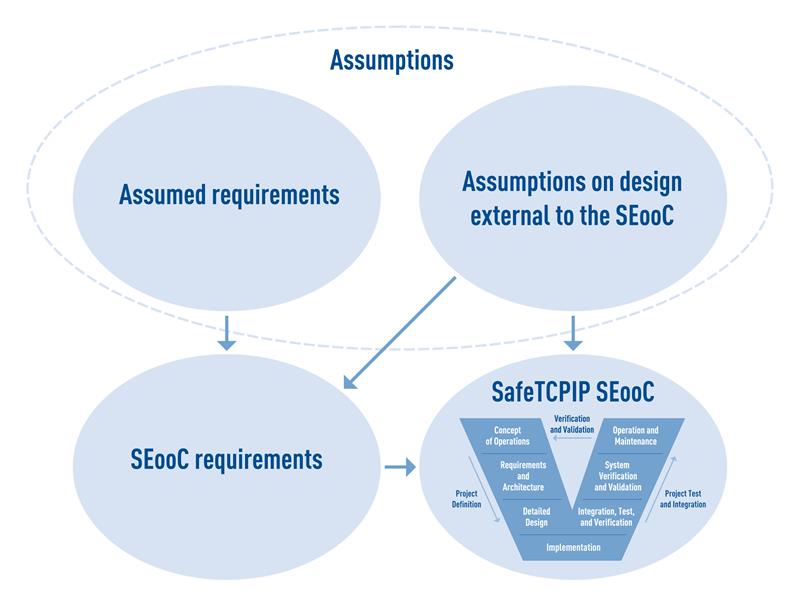HCC created the processes and environment to build reusable SEooCs and introduced its first Element: the HCC SafeTCPIP network stack for use in automotive systems. Future releases will map the standard ISO26262 V-model process to other safety-critical standards such as in aerospace, industrial, and medical device markets.
Originating in ISO 26262-10, SEooC is defined as a method for using software or hardware components in a vehicle that were not originally designed for that specific project. A software SEooC is developed to a safety
standard, which means that it is developed with all the processes of a full software safety lifecycle and within the design constraints of a safety system.

Automotive software developers may require a TCP/IP stack to be integrated into a safety product to guarantee the quality of the networking or to allow it to be used in a safety environment for a supporting, non-safety-critical role such as diagnostics. HCC’s SafeTCPIP is a complete TCP/IPv4 network stack developed to the ISO 26262 Automotive Safety Integrity Level (ASIL) B standard.
“Safety standards promote the reuse of proven software elements; however, reusing software in a safety context introduces complex challenges, such as how to do full lifecycle maintenance on essentially off-the-shelf components,” said HCC Embedded CEO Dave Hughes. “HCC has invested extensive time and effort into packaging a SEooC process for deeply embedded software components and we’ve built the full lifecycle to be a manageable part of our customers’ safety development.”
Critical to the success of this approach, HCC’s SafeTCPIP Element is developed to full ISO 26262 Section 6 processes for integration with automotive systems that require a high safety-integrity level and is supported by an independent software lifecycle for maintenance. The exact verified product that is integrated can be maintained and modified to safety standards independent of any other project that integrates SafeTCPIP. Because it is developed as a SEooC, the Element can be integrated with the company’s other safety development lifecycle.
HCC’s Integration TestBench (ITB) can be used to validate SafeTCPIP integrated with any safety project, generating a complete test report by executing SafeTCPIP on the target.













